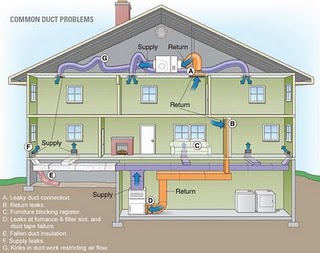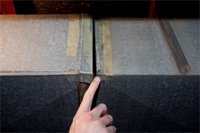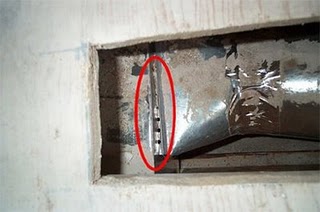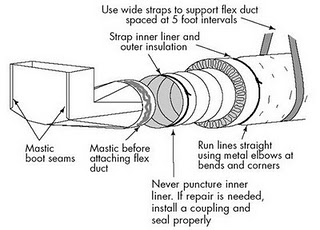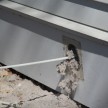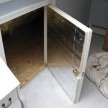Heat Duct Leaks
Air Leaks In HVAC Duck Work
Our home’s ducts are a common source of energy losses. Heat duct leaks are inevitable but can be significantly reduced.
According to Energy Star, Heat duct leaks and HVAC leaks reduce heating and cooling system efficiency by as much as 20%. Sealing and insulating ducts increases efficiency, lowers energy bills, and can have a pay off in a few years.
Check Your Ducks For Leak
Look for sections that are separated (when they should be joined), and look for possible cracks and holes these areas are major sources of heat duct leaks.
Common Duct Problems:
1. Leaky, torn and disconnected ducts
2. Poorly sealed registers and grills
3. Leaks at the furnace and filter slot
4. Kinks in flexible duct work restricting airflow.
Duct Insulation
Duct insulation is a very cost effective investment, and should be installed on ducts located in unconditioned areas such as attics or basements.
NOTE – Insulation will not stop or prevent heat duct leaks. Insulation makes your duck work retain its heat or cool air more efficiently and prevents heat / cooling loss in areas not designed to receive air conditioning.
Seal Heat Duct Leaks
- Seal air leaks with mastic of metal [aluminum] tape.
- Make sure that connections at vents, and registers are well sealed where they meet floors, walls and ceilings.
- Have a professional contractor evaluate air flow after repairs are completed.
- Have them ensure there is no back drafting of gas or oil-burning appliances, and conduct a combustion safety test after ducts are sealed. Evaluate the system’s supply and return air balance. Many systems have air return ducts that are too small.
Taking just a few of these steps listed to reduce heat duct leaks can be a straightforward project and a DIY project.
Consider A Home Energy Audit
A home energy audit is used to assess how much energy your home consumes and to evaluate what measures you can take to make your home more energy efficient. An audit will show you problem areas in your home. These areas, if corrected, can save you hundred of dollars in heating and cooling savings over time.



